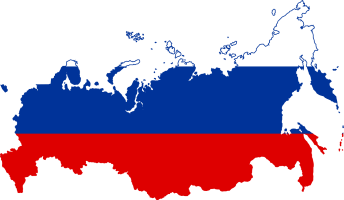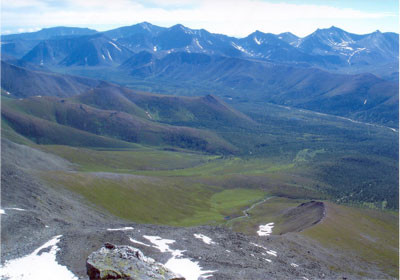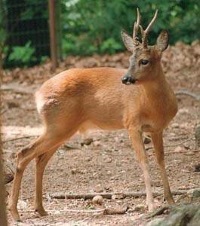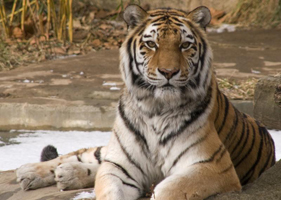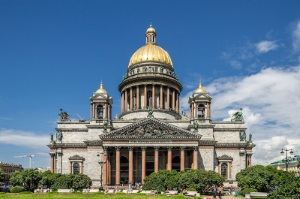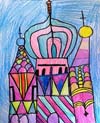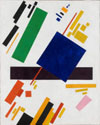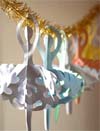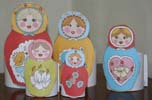Russia -- School-age
Russia
Things to Know
The official name for Russia is the Russian Federation.
Capital:
Official Language: Russian
Abbreviation: RU, RUS
Ruble
The rouble or ruble (RUB) is the currency of Russia. The ruble is divided into 100 kopecks; 100 kopecks to one rouble.
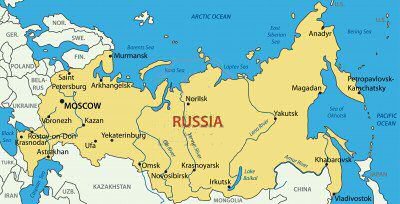
Russia is the world's largest country in terms of landmass. It occupies about one-tenth of all the land on Earth. There are 9 time zones, until 2010 there were 11 time zones, in Russia across two continents (Europe and Asia). It has coasts on three oceans (Atlantic, Pacific, and Arctic). It is approximately 1.8 times the size of the USA.
Russia has a total area of 17.08 million km² (6.59 million mi²). It's land area ia 16.37 million km² (6.32 million mi²) Its water area is 720 million km2 ( 72 million mi²).
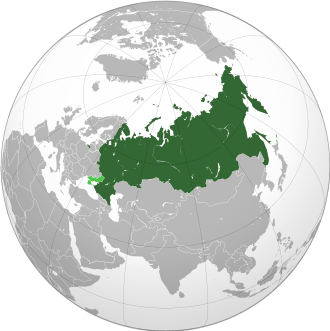
Video
History
There are 4 periods of importance in Russia's history:
The Kievan and Appanage Periods(860-1698)
The House of Rurik
--Became the first Russian tsar(czar) in 1547.
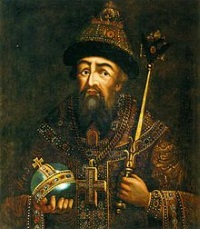
18th century depiction
in the State Historical
Museum of Ivan IV
The Imperial Period (1698-1917)
The House of Romanov
Alexander
II of Russia
(1818-1881)
Notable for the abolition of serfdom. He sold Alaska and the Aleutian
Islands to the United States.
Nicholas
II, the last Russian Czar
Anastasia-The youngest daughter of Czar Nicholas II.
Faberge Eggs
Faberge eggs are jeweled eggs made by Peter Carl Faberge and his assistants between 1885 and 1917. Many Faberge Eggs were created for Russia's royalty, from Czars Alexander III to Nicholas II.
The Soviet Period (U.S.S.R.) (1917/22-1991)
The U.S.S.R. was the successor to the Russian Empire of the tsars.
The political system was thus authoritarian and highly centralized, and this also applied to the economic system. The government centred on the one-party monopoly (Communist party). The political and economic order was communism that drastically suppressed political dissidence, newspapers, changed the education system, and tried to eliminate religious beliefs.
(1818-1883)
The Father of Communism
His changes were factors that contributed to the collapse of the U.S.S.R (Soviet Union).
The Post-Soviet Period (1991-Present)
In 1989, communism fell in Germany and so did the Berlin Wall, then communist rule fell throughout Eastern Europe. Boris Yeltsin was elected President of the Soviet Union in 1990. The Soviet Union officially, and communism, came to an end in 1991, the once-mighty Soviet Union had fallen. A peaceful end to a long and sometimes bloody history. Many Baltic States would declare their independence and break away from Russia.
Russia is a federation of republics, provinces, territories, and districts, all controlled by the government in Moscow. The head of state is a president elected by the people.
President of Russia Vladimir Putin
From 1917/22–1991 Russia was called the Union of Soviet Socialist Republics, (U.S.S.R.) also called the Soviet Union.

